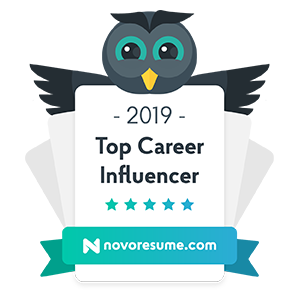Updated: October 2022
What do you want to be when you grow up? For those lucky enough to know their life’s purpose, this is an easy question to answer. However for others, not-so-sure about where they fit in the career world, this is a challenge that lasts years – sometimes longer. I’ll be the first to admit that the bulk of my career has been spent feeling unfulfilled in practically every job I’ve held for one reason or another. If you’re not quite sure what you want to do in your next move, there are ways to become more sure and put into place the pieces that will lead you to a more fulfilling career path. In this blog post we’ll explain how.
1. Research, Research, Research
Spend time focusing on research before you start getting lost in a slew of online job boards and aimlessly wandering around endless unappealing job descriptions. Time is of the essence and if you’re feeling motivated where the job hunt is concerned, you won’t want to waste this precious drive on being overwhelmed online. Gaining clarity is the first step towards figuring out what you want to be when you grow up (or in the not so distant future) so don’t underestimate this critical piece of the puzzle.
2. Know Your Dislikes
Knowing when and where you aren’t a fit can be helpful in your total career picture. This honest look at your career dislikes helps to weed out the roles and responsibilities that just don’t do it for you. While it may not be the positive insight you’re hoping for about you, it’s important not to overlook this aspect of your career path completely. Instead, use it to your advantage.
Before I found my niche I held a number of different jobs across a variety of industries: education, fashion, childcare, non-profit and recruiting. They were all an integral part of my career in that they helped me grow as a professional and gain valuable skills to make me successful at what I do today. In each job I was able to identify and refine my strengths and interests. These jobs were also important in helping me determine what I DIDN’T want to do, not to mention save me from wasting time in the wrong jobs.
3. Know the Industry and Players
If you aren’t exactly sure about your next move but have an industry or two in mind, start to explore these further. What appeals to you about the industry? What qualities, cultures, and roles exist within the industry? This can help you to narrow down companies to go after. Once you’ve uncovered your dream company, research the competitors. This will allow you to start uncovering a pool of opportunities from which to apply when the time comes. LinkedIn is a great resource for career path exploration. Google also works. Don’t overthink it. Just start searching online for companies or people in your target industry. Then job down those who appeal most to you and set up an informational interview to learn more!
“One of the first things I realized when working with NG Strategy was that I didn’t know what I didn’t know. As a communications professional, I had thought my resume, profile and cover letters were compelling, but when they failed to generate interviews, I decided to give NG Strategy a try as Noelle and team had been highly recommended. Within three weeks, I had new resume, a targeted cover letter and a greatly enhanced LinkedIn profile. I “get it” now…I get what you are supposed to do and how to have an edge. I have been in the work force for more than 30 years, and my career has taken me in a few directions. NG Strategy helped me to hone my skills and experience and better define my “brand” in a way I hadn’t been able to before. What they were able to accomplish in just a few weeks would have taken me months, if ever, to achieve. Wonderful people and process–and worth every penny! I highly recommend The Works –and wish you all great success in your search!”
– Priscilla, VP Communications & Resume Client, NG Career Strategy
4. Understand Company Structures
If ever there were a headhunter secret worth knowing, this would be it: knowing org charts. Once you’ve found your dream company, take some time to conduct research around how many roles are available within your target company. Are there 100 jobs that might be open at any given time or 1? If you can get a sense of seasonal demand for your role that’s even better. Perhaps the company is always hiring or maybe it’s just once every year. This intel will help you understand when to focus your efforts around said company.
5. Know the Path to Your Dream Job
If you’re hoping to change industries or professions, it’s likely the case that you won’t be able to make an immediate or direct entry. Instead, you’ll have to take some stepping stone opportunities along the way. This is perfectly fine and sometimes necessary to end up where you want. Know which jobs you have to be doing to eventually do your dream job. Linkedin is an awesome tool for reverse engineering career paths which is essentially what you’d be doing. Working with a Career Clarity Coach can also help to distill your values, interests, personality, and strengths and find the path to career fulfillment!
6. Know Yourself
It’s not enough to just know what you want to do. You also have to know yourself and what types of jobs exist for someone like you. Your resume is a great starting point for uncovering who you are and what opportunities are available given your past experience. Employers look to hire someone who has done the job or can do it based on past experience so this might be the most logical approach to figuring out your next move. Spend time pulling out your transferable skills. Not sure what transferable skills are? Check out this blog post now.
Access Noelle’s Career Clarity Resources Now!
7. Go With Your Gut
When all else fails, try the Pinterest approach to your job search. Since you’ve been looking at job descriptions non-stop anyway, start to bookmark those that appeal to you or capture your attention at first glance. (Note: You might want to copy paste the job descriptions instead of a bookmark in case the posting expires or is removed). At the end of the day, you know you better than anyone else and a little gut reaction can go a long way. Once you’ve saved a slew of job descriptions, conduct a deeper analysis in which you identify common themes around culture, skills, tasks and other desirable job description traits. Having your list of must-haves for your next job will ensure that you don’t make any compromises and set yourself up to be much more fulfilled.



 How to Deal with Job Loss: 6 Practical Tips for Picking Up the Pieces & Moving Forward
How to Deal with Job Loss: 6 Practical Tips for Picking Up the Pieces & Moving Forward![Finding Your Life's Purpose [3 Steps]](https://www.ngcareerstrategy.com/wp-content/uploads/2015/10/27578002_ml.jpg)


